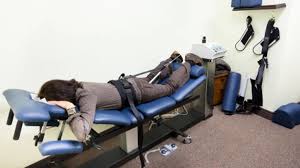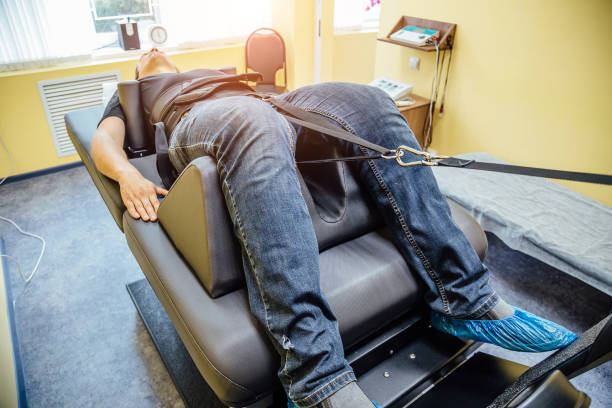Chronic back pain can be a debilitating condition, significantly impacting your daily activities and overall well-being. If you’ve exhausted conventional pain management methods or are hesitant about surgery, spinal decompression therapy might be a solution worth exploring. This non-invasive approach has become increasingly popular for its potential to alleviate pain and promote long-term spinal health.
Understanding Your Spine and the Root of Back Pain
Your spine is a marvel of engineering, providing structure and support for your entire body. It consists of a series of vertebrae stacked upon each other, separated by spongy discs that act as shock absorbers. These discs are vital for maintaining proper spinal alignment and flexibility. However, due to wear and tear, injury, or age-related degeneration, these discs can become compressed, bulging, or herniated. When this occurs, they can impinge on the spinal nerves, causing pain, numbness, tingling, and weakness.
What is Spinal Decompression Therapy and How Does it Work?
Spinal decompression therapy offers a non-surgical approach to address these issues. It utilizes a specialized table or device equipped with harnesses that gently stretch and create a distraction force in the spine. This distraction aims to increase the space between the vertebrae, achieving several potential benefits:
- Disc Rehydration: The negative pressure created within the disc during decompression may promote the influx of fluids and nutrients necessary for disc health. Proper hydration is crucial for disc integrity and functionality.
- Disc Retraction: The distraction force applied during therapy may help to retract bulging or herniated disc material. By creating more space, the pressure on the impinged nerves is relieved, potentially reducing pain and discomfort.
- Improved Blood Flow: Increased space within the spine can improve blood flow to the discs and surrounding tissues. This enhanced blood flow can promote healing and facilitate the delivery of essential nutrients for disc repair.
- Pain Relief: The primary mechanism for pain relief with decompression therapy is believed to be the reduction of pressure on the spinal nerves. By creating more space between the vertebrae, the pinched nerves are relieved, leading to a decrease in pain, numbness, and other associated symptoms.
Who Can Benefit from Spinal Decompression Therapy?
While spinal decompression therapy is not a one-size-fits-all solution, it may be a suitable option for individuals experiencing various back-related conditions, including:
- Chronic lower back pain: If you’ve been struggling with persistent back pain that disrupts your daily activities, decompression therapy could provide long-term relief.
- Herniated discs: When the disc material pushes through its outer wall, it can cause significant pain and nerve compression. Decompression can potentially help retract the disc material, alleviating these symptoms.
- Sciatica: This radiating pain down the leg often stems from a pinched nerve in the lower back. Decompression therapy can create more space in the spinal canal, potentially relieving pressure on the sciatic nerve.
- Degenerative disc disease: As the discs wear down with age, they can lose height and functionality. Decompression therapy may help maintain proper disc spacing and improve blood flow, potentially slowing down the degenerative process.
Important Considerations Before Treatment
While spinal decompression therapy offers a promising solution for back pain, it’s crucial to consult with a healthcare professional before starting treatment. They can assess your individual needs and medical history to determine if this therapy is the right course of action for your specific condition. Some factors they might consider include:
- Severity and cause of your back pain
- Overall health and presence of any pre-existing conditions
- Previous treatments you’ve undergone
Spinal Decompression Therapy and Chiropractic Care
Spinal decompression therapy can be a valuable tool within a comprehensive chiropractic care plan. Chiropractors are trained in musculoskeletal conditions and can utilize back decompression therapy alongside other techniques like:
- Manual adjustments: Chiropractic adjustments aim to restore proper alignment in the spine, promoting better joint function and pain relief.
- Therapeutic exercises: Strengthening and stretching exercises can improve core stability and flexibility, reducing the strain on your spine.
- Lifestyle modifications: Maintaining good posture, practicing proper lifting techniques, and managing stress can all contribute to improved spinal health and prevent future problems.
Conclusion
Spinal decompression therapy offers a safe and effective non-surgical approach to managing back pain and promoting long-term spinal well-being. If you’re seeking relief from chronic back pain, consult with a healthcare professional or chiropractor to explore if this therapy might be right for you. Remember, early diagnosis and intervention are key to managing back pain effectively and regaining control of your life.
By understanding the benefits and considerations of spinal decompression therapy, you can make an informed decision about your spine wellness and overall health.




